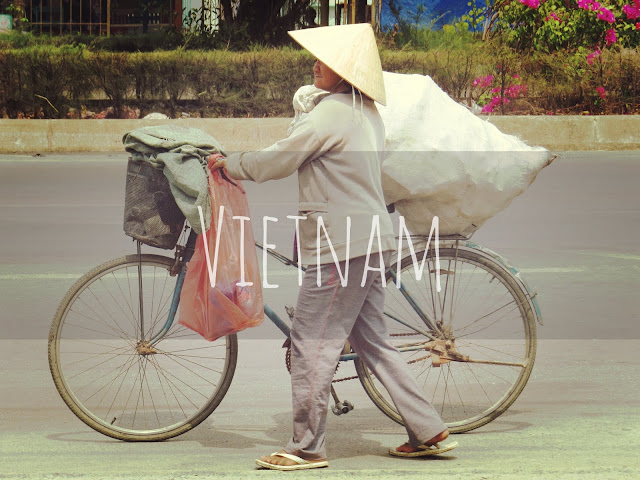Crossing Borders: Vietnam Itinerary (Day 2)
I woke up seeing my aunt almost ready for the day's tour which I found odd because she has always been the last to prepare. She forgot that Vietnam is one hour delayed of Manila time!

Day 1 left our toes tired and muscles aching (the effect of our 10km marathon stroll). The first day was more of 'DIY-slash-it's okay to get lost tour'. Day 2 turned out to be a more 'relaxed-slash-dive into Vietnam's historical tour'. Having booked a half day tour, we rode a bus that brought us to Cu Chi district.
TNK Travel
Our tour guide from TNK Travel was prompt, picked us up from our hotel, and assisted us to the bus where we'd be joining other tourists. Almost 80% of travelers inside the bus were made up of young American-European backpackers.
Cu Chi district is approximately 1.5 hour's drive from Ho Chi Minh. It was a comfortable ride with our guide sharing his invaluable stories and insights about the Vietnam War. He was more than knowledgeable, he was also candid.
Up until these days, there were still reports about bombs exploding in the fields. Due to the large number of bombs dropped in Vietnam, not all of it has been successfully recovered.
Agent Orange
Before we proceed to our main destination, we drop by a shop employing victims of Agent Orange.
Agent Orange is the combination of the code names for Herbicide Orange (HO) and Agent LNX, one of the herbicides and defoliants used by the U.S. military as part of its chemical warfare program, Operation Ranch Hand, during the Vietnam War from 1961 to 1971. An estimated 400,000 people were killed or maimed, and 500,000 children were born with birth defects as a result of its use. The effects, unfortunately, were passed on to the children and grandchildren of victims.
You can view clips of these workers here.
 |
| Tour Guide: Here in Vietnam, motorcycle drivers are like TIGERS. They can sense your fear while trying to cross the street |
Up until these days, there were still reports about bombs exploding in the fields. Due to the large number of bombs dropped in Vietnam, not all of it has been successfully recovered.
Agent Orange
Before we proceed to our main destination, we drop by a shop employing victims of Agent Orange.
Agent Orange is the combination of the code names for Herbicide Orange (HO) and Agent LNX, one of the herbicides and defoliants used by the U.S. military as part of its chemical warfare program, Operation Ranch Hand, during the Vietnam War from 1961 to 1971. An estimated 400,000 people were killed or maimed, and 500,000 children were born with birth defects as a result of its use. The effects, unfortunately, were passed on to the children and grandchildren of victims.
You can view clips of these workers here.
The Cu Chi Tunnel Tour
 |
| a tourist getting inside one of the tunnels |
The Cu Chi Tunnels are a network of underground passageways that run to more than 200 kilometers in total length in this area alone. The Viet Cong secretly worked for this tunnel in 1948 as a means of shelter from the French air attacks during the Indochina conflict. The network provided vital access and strategic control over the large rural area surrounding Ho Chi Minh City. For over two decades, the tunnels became an underground city helping local people continue to live underground.
There we discovered a couple of tactics the Vietnamese used during the war, including traps, explosives, tracking system, food intake, and other survival strategies. We also got to experience what it feels like to get inside these tunnels. If you feel more adventurous and have extra cash to burn, might as well try to shoot guns, for a fee, of course.
The Cu Chi Tunnel tour should be on your must travel list in case you decide to visit Vietnam. It opens your eyes to the window of the past. It inspires you to proactively work on PEACE, something we, from Mindanao, can learn a lot from.
Related posts:
Crossing Borders: Backpacking with a Senior and Indochina Itinerary
Crossing Borders: Vietnam Itinerary (Day 1)
How Much Should You Save For An Awe-Inspiring Asian Trip?






Comments
Post a Comment